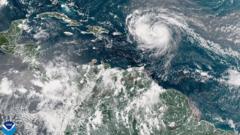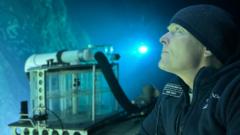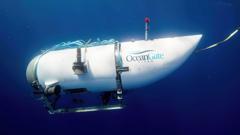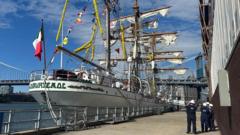OceanGate's Titan submersible imploded on its journey to the wreck of the Titanic because of poor engineering and multiple failures to test the vessel, according to an official report.
The Titan imploded in June 2023, killing all five passengers on board including OceanGate's chief executive.
The US National Transportation Safety Board (NTSB) found the engineering process behind the vehicle was 'inadequate', resulting in faults which meant it failed to meet strength and durability requirements.
The NTSB said because the firm did not adequately test Titan it did not know its actual strength. It was also unaware it was damaged and should have been removed from service before its last voyage.
Titan disappeared in the North Atlantic as it attempted to dive to the wreck of the Titanic which lies some 372 miles from St. John's in Newfoundland and Labrador in Canada.
In August, the US Coast Guard released a damning report into the implosion which found that the incident was 'preventable' and criticised OceanGate's 'critically flawed' safety practices.
Stockton Rush, OceanGate's chief executive and co-founder, operated the Titan on its final journey. The victims, who paid up to $250,000 each for the dive, included deep-sea explorer Paul-Henri Nargeolet, and Shahzada Dawood along with his 19-year-old son Suleman Dawood.
The Titan was a 6.7m (22ft) long submersible with a passenger compartment made of carbon fibre, utilizing titanium in its domes and some components. It imploded at a depth of 3,363m (11,033ft), while the Titanic wreck is located at 3,880m.
During its investigation, the NTSB discovered issues with the safety culture at OceanGate. Despite some employees prioritizing safety, others reported a climate where safety issues were overlooked.
The NTSB outlined that insufficient adherence to safety measures led to the unforeseen tragedy, ultimately suggesting a review of current regulations to prevent future disasters.
In its recommendations, the NTSB urged the US Coast Guard to commission a study to evaluate how passenger-carrying pressure vessels are examined and the need for regulatory updates.




















